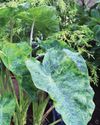
The need to conserve water in the garden is increasingly becoming a challenge throughout many parts of the United States. Some areas of the country, like California, the Southwest and Texas, have naturally arid climates, while many other spots are experiencing extended periods of drought during the growing season. As a result, more gardeners are starting to use plants such as succulents and deep-rooted prairie natives in their ornamental plantings to mitigate the impacts of low water in the garden.
There are hundreds of outstanding plants that have adapted to dry conditions and will thrive in the garden, including kinds of cactus. The South African ice plants (Delosperma) are growing in popularity. We should consider, too, the myriad of rock-gardening plants that have adapted to the harshest of conditions. I recommend taking a close look at the following plants, which I highlight for their diverse sizes and appeal.
SEDUMS: SUPER SUCCULENTS
A group of plants that immediately comes to mind when planting a waterwise garden are the succulents. This group has swollen leaves and stems that act as a reservoir for water. Sedums qualify as succulents, and there are literally hundreds of species and cultivars from which to choose.
One that stands out is ‘Angelina’ stonecrop (Sedum rupestre ‘Angelina’; USDA Zones 5–9), which received the Pennsylvania Horticultural Society’s Gold Medal Award as an outstanding ornamental plant for the Mid-Atlantic. Its narrow succulent leaves shine a bright golden yellow throughout the growing season, and in many climates they remain evergreen, adding color for the winter.
This story is from the September - October 2024 edition of Horticulture.
Start your 7-day Magzter GOLD free trial to access thousands of curated premium stories, and 9,000+ magazines and newspapers.
Already a subscriber ? Sign In
This story is from the September - October 2024 edition of Horticulture.
Start your 7-day Magzter GOLD free trial to access thousands of curated premium stories, and 9,000+ magazines and newspapers.
Already a subscriber? Sign In

Pot It Up
Shake up the containergarden with theseNorth America –native perennials

THE GARDEN PATH TO PERDITION
I WAS CRUISING RIGHT ALONG, feeling okay about myself, when I came across a list of the Seven Deadly Sins.

A Productive PATIO
Tiny fruit, vegetable and herb plants help gardeners maximize any sort of growing space

TROPICAL FUSION
A FUSS-FREE APPROACH TO USING BOLD TROPICAL PLANTS IN ANY TEMPERATE GARDEN

WINTER READING
Pass the time with any of these inspiring books

SENSING A PATTERN
Greg Coppa reflects on an odd weather year and what continued warming may mean for his Rhode Island garden

TOP-PRIZE PERENNIALS
A foliage masterpiece for shade and a late bloomer for sun

MARK WESSEL
What's new for fruit and vegetable gardeners?

KINGS OF THE NORTHERN FORESTS
A look at the trees, shrubs and perennial plants that bolster life in Ecoregion 5

PROJECT FEEDERWATCH
Gardeners can help scientists know just where the birds are in winter